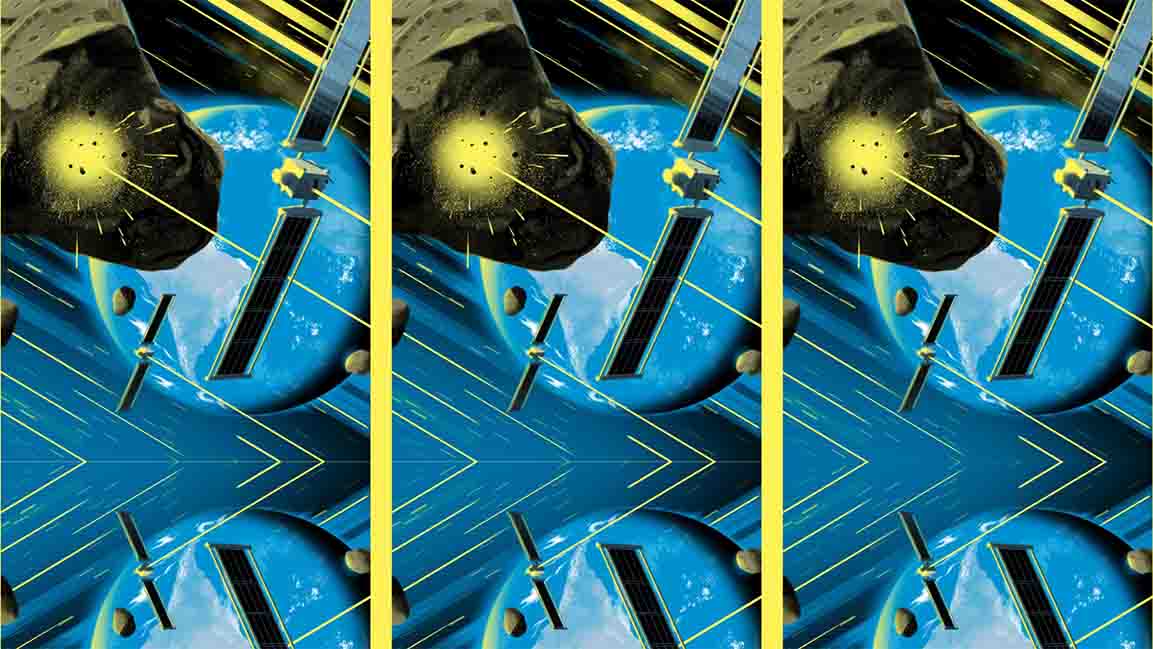- | 9:00 am
How NASA pulled off the DART mission, making science fiction a reality
In a test of planetary defense capabilities, NASA and Johns Hopkins Applied Physics Laboratory crashed a spacecraft to alter an object’s orbit.

NASA hit multiple big targets in 2022 —releasing the first images from the James Webb Space Telescope in July, sending an uncrewed Artemis I crew vehicle on a monthlong test trip around the Moon in November. It also scored a literal bullseye hit on Dimorphos, a rocky “moonlet” orbiting the asteroid Didymos, some 6.8 million miles from Earth.
On September 26, the Double Asteroid Redirection Test (DART) —a collaboration between NASA and the Johns Hopkins Applied Physics Laboratory, with launch help from SpaceX—intentionally crashed a box-shaped spacecraft about the size of a refrigerator into Dimorphos, successfully changing its trajectory and shortening its orbit period by about 32 minutes. While Dimorphos and Didymos are never a threat to Earth—they were chosen more than a decade ago by APL scientists because the proximity of the two asteroids makes it relatively easy to determine the effect that spacecraft impact would have on Dimorphos’ orbit—the mission was intended to mimic what could be done if an asteroid heading toward Earth were discovered.
“This is the first time humankind has actually changed the trajectory of a natural body in space,” says Lindley Johnson, NASA’s first planetary defense officer. Johnson heads the Planetary Defense Coordination Office, part of NASA’s Planetary Science division, tasked with detecting and planning a response to potentially hazardous near-Earth objects like asteroids and comets. “So it’s a milestone not only for planetary defense, but for humans reaching and exploring the solar system.”
The real-world data obtained from DART is already being used to update NASA’s models of asteroid deflection, with researchers looking at how the 2 million pounds of rock and debris that was ejected from the asteroid on impact contributed to changing its course. “All that mass ejected from the asteroid imparts a force of its own in the opposite direction, an enhancement of the force directly applied by the spacecraft,” says Johnson. “Now we understand better how those different forces work together to change the trajectory of future objects where we might need to intervene.”
The DART represents just one potential method—the “kinetic impactor” technique—for deflecting a near-Earth object, says Johnson.
“We look forward to being able to test other techniques in the future,” he says. These include a “gravity tractor” method—stationing an object to closely track a moving asteroid and alter its path through gravitational pull—and using ion beam deflectors. “It’s even been speculated that if you have enough time, all you have to do is paint one side of the asteroid a bright color so it radiates more of the solar energy, and that over a course of time will change its orbit,” says Johnson.
With apologies to Bruce Willis, though, nukes are a no-go. “There’s really no way for us to be assured that even a nuclear explosion will totally disintegrate all that mass,” says Johnson. “It’ll blow it up into buckshot, basically, that is still on the same trajectory headed toward the Earth. That’s not necessarily a benefit.”
The culture of innovation is alive and well at NASA, Johnson says. But, he cautions, “people need to keep in mind that it takes a while for some of these big things to cook. Every one of these projects has been years in the making. And the main thing is that we need to keep steadily at things, and not be changing direction every few years.”






































